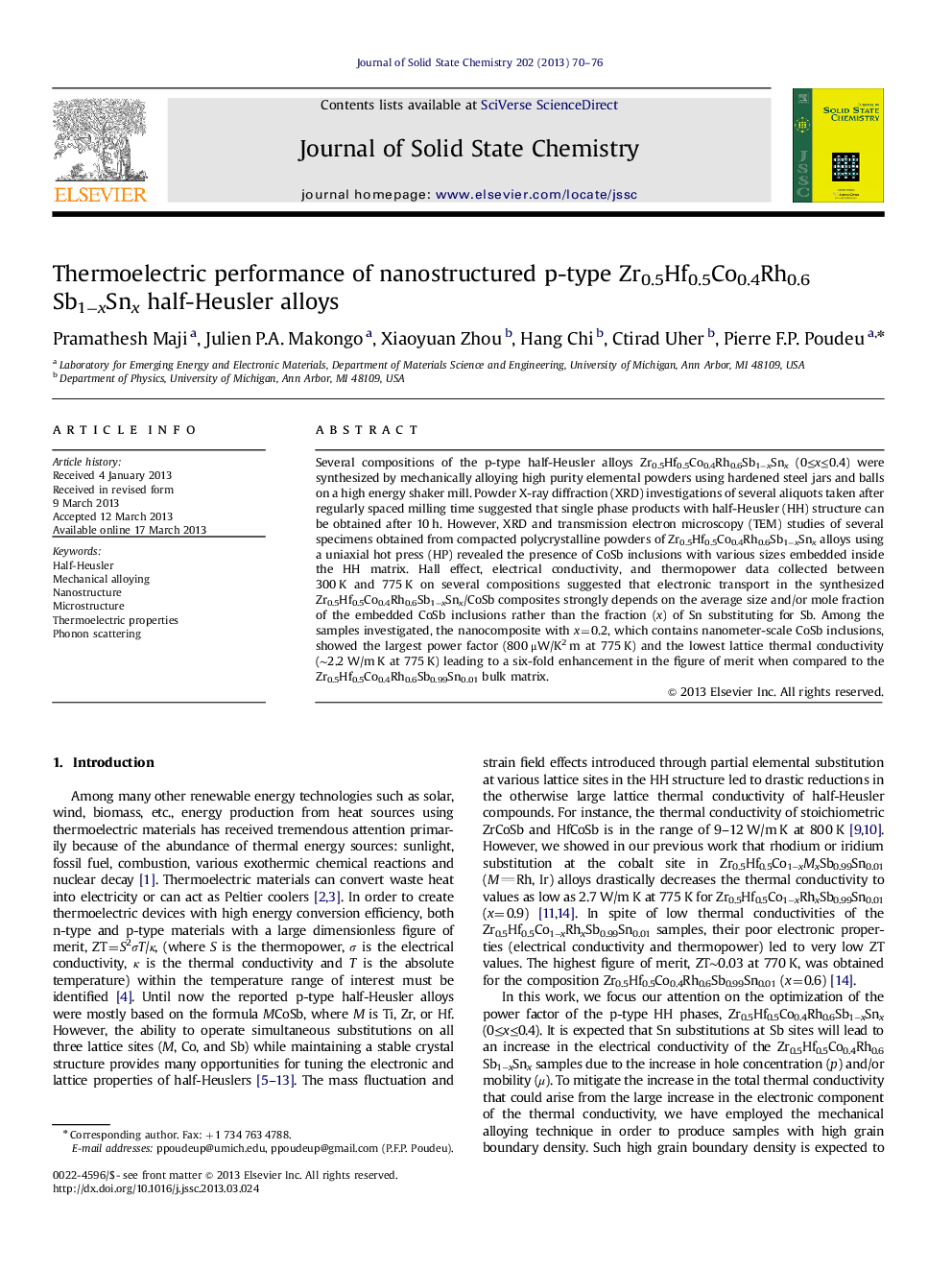| Article ID | Journal | Published Year | Pages | File Type |
|---|---|---|---|---|
| 1332248 | Journal of Solid State Chemistry | 2013 | 7 Pages |
•The phase composition of half-Heusler (HH) alloy is very sensitive to the synthesis method.•Mechanical alloying (MA) of elements results in bulk HH matrix with CoSb inclusions.•CoSb nanoinclusions simultaneously boost the thermopower and carrier mobility with the HH matrix.•The MA process reduces lattice thermal conductivity due to high density of grain boundaries.
Several compositions of the p-type half-Heusler alloys Zr0.5Hf0.5Co0.4Rh0.6Sb1−xSnx (0≤x≤0.4) were synthesized by mechanically alloying high purity elemental powders using hardened steel jars and balls on a high energy shaker mill. Powder X-ray diffraction (XRD) investigations of several aliquots taken after regularly spaced milling time suggested that single phase products with half-Heusler (HH) structure can be obtained after 10 h. However, XRD and transmission electron microscopy (TEM) studies of several specimens obtained from compacted polycrystalline powders of Zr0.5Hf0.5Co0.4Rh0.6Sb1−xSnx alloys using a uniaxial hot press (HP) revealed the presence of CoSb inclusions with various sizes embedded inside the HH matrix. Hall effect, electrical conductivity, and thermopower data collected between 300 K and 775 K on several compositions suggested that electronic transport in the synthesized Zr0.5Hf0.5Co0.4Rh0.6Sb1−xSnx/CoSb composites strongly depends on the average size and/or mole fraction of the embedded CoSb inclusions rather than the fraction (x) of Sn substituting for Sb. Among the samples investigated, the nanocomposite with x=0.2, which contains nanometer-scale CoSb inclusions, showed the largest power factor (800 μW/K2 m at 775 K) and the lowest lattice thermal conductivity (∼2.2 W/m K at 775 K) leading to a six-fold enhancement in the figure of merit when compared to the Zr0.5Hf0.5Co0.4Rh0.6Sb0.99Sn0.01 bulk matrix.
Graphical abstractCoSb nanoinclusions embedded into a p-type Zr0.5Hf0.5Co0.4Rh0.6Sb1−xSnx half-Heusler matrix simultaneously boost the thermopower and carrier mobility leading to a drastic enhancement of the power factor of the resulting bulk nanostructured materials.Figure optionsDownload full-size imageDownload as PowerPoint slide
